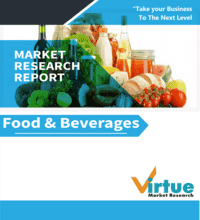Liquid Sugar Market Size (2025 – 2030)
The Global Liquid Sugar Market was valued at USD 12 billion in 2024 and is projected to grow at a CAGR of 5.5% from 2025 to 2030. The market is expected to reach USD 17.4 billion by 2030.
Liquid sugar, a highly versatile sweetening agent, is widely used in various industries such as food and beverages, pharmaceuticals, and personal care. It is derived from either cane or beet sugar, offering a ready-to-use, dissolved sugar solution that reduces processing time in industrial applications. The market is witnessing steady growth due to rising demand for convenience in production, increased consumption of sweetened beverages, and the shift towards liquid ingredients for consistency in flavor and texture.
Key Market Insights
-
The food and beverage industry accounts for the largest share of liquid sugar demand, driven by its application in carbonated drinks, bakery products, and confectionery items.
-
Growth in the global beverage sector, particularly in energy and flavored drinks, has propelled liquid sugar's market expansion due to its easy solubility and uniform sweetness.
-
The demand for liquid sugar in the pharmaceutical sector is increasing, particularly for syrups and liquid medications, where it acts as both a sweetener and a stabilizer.
-
Rising health consciousness has led to the development of low-calorie and organic liquid sugar variants, catering to diet-conscious consumers and health-focused brands.
-
Increasing urbanization and industrialization in developing regions, such as Asia-Pacific, are driving higher adoption of liquid sugar in food processing industries.
-
Manufacturers are investing in technological advancements to enhance the production efficiency of liquid sugar and minimize impurities.
-
Regulatory concerns regarding sugar consumption and its health impacts, such as obesity and diabetes, pose challenges to market growth, encouraging innovation in healthier sugar alternatives.
-
The growing prominence of e-commerce platforms is facilitating the distribution of liquid sugar to small-scale food and beverage businesses globally.
Global Liquid Sugar Market Drivers
Rising Demand in the Beverage Industry is driving market growth: The beverage industry is a significant driver of the liquid sugar market, with its application ranging from carbonated soft drinks to energy drinks and flavored waters. Liquid sugar provides manufacturers with consistency in flavor and ease of integration into production processes. As the global demand for ready-to-drink beverages rises, particularly among younger populations, the requirement for high-quality sweeteners like liquid sugar has grown correspondingly. In addition, the versatility of liquid sugar enables its use in niche beverage segments, such as functional and plant-based drinks, which are rapidly gaining popularity. Furthermore, the recovery of the out-of-home beverage segment post-pandemic is further bolstering demand in this sector.
Growing Popularity of Organic and Low-Calorie Variants is driving market growth: Consumer health trends are influencing the liquid sugar market, pushing manufacturers to innovate and offer organic, low-calorie, or alternative sweetener-based liquid sugars. With growing awareness of the adverse health effects of excessive sugar consumption, consumers are opting for products with clean labels and natural ingredients. Organic liquid sugar derived from certified organic sources has witnessed increased adoption, especially in Europe and North America. Simultaneously, low-calorie variants formulated with reduced sucrose content are addressing the needs of health-conscious individuals. This trend is reinforced by regulatory policies promoting the reduction of added sugars in processed foods and beverages, creating a strong impetus for market diversification.
Expanding Applications in Non-Food Sectors is driving market growth: Beyond food and beverages, liquid sugar is increasingly being utilized in industries such as pharmaceuticals and personal care. In pharmaceuticals, it acts as a critical ingredient in cough syrups, tonics, and oral medications, providing sweetness, stability, and viscosity. The personal care industry leverages liquid sugar in products like scrubs, shampoos, and moisturizers, where it functions as a natural exfoliant or humectant. These emerging applications are contributing to the broadening scope of the liquid sugar market, particularly in regions where pharmaceutical and cosmetic industries are flourishing. Additionally, liquid sugar’s easy handling and high solubility make it an attractive choice for industrial applications across various sectors
Global Liquid Sugar Market Challenges and Restraints
Health Concerns and Regulatory Constraints is restricting market growth: The growing prevalence of lifestyle-related health issues such as obesity, diabetes, and cardiovascular diseases has led to increased scrutiny of sugar consumption. Regulatory bodies worldwide are implementing policies to reduce added sugar content in processed foods and beverages. For example, sugar taxes in several countries have impacted the demand for sugary products, indirectly affecting the liquid sugar market. Furthermore, the rising adoption of alternative sweeteners such as stevia, aspartame, and monk fruit, which offer zero or low-calorie options, poses stiff competition to traditional liquid sugar. Manufacturers are under pressure to innovate and develop healthier variants to sustain market growth amidst these challenges.
Volatility in Raw Material Prices and Supply Chain Disruptions is restricting market growth: Liquid sugar production depends heavily on the availability and pricing of raw materials like cane and beet sugar. Fluctuations in sugar prices due to climatic conditions, geopolitical tensions, and trade restrictions can significantly affect production costs and profit margins. Additionally, supply chain disruptions caused by the COVID-19 pandemic highlighted vulnerabilities in the global sugar industry, including transportation delays and labor shortages. These challenges underscore the need for efficient supply chain management and the adoption of diversified sourcing strategies to mitigate risks and ensure steady supply to meet market demand.
Market Opportunities
The growing demand for liquid sugar in emerging markets presents significant opportunities for manufacturers. Rapid urbanization and the expansion of the food processing industry in regions like Asia-Pacific and Africa are driving the adoption of liquid sugar as a preferred sweetener. The convenience of liquid sugar in industrial applications aligns with the operational needs of these fast-growing markets. Furthermore, the shift towards natural and organic food products has created a niche segment for organic liquid sugar, offering growth potential in premium markets. Leveraging technological advancements to enhance the efficiency and sustainability of liquid sugar production will also unlock opportunities. Additionally, investing in alternative liquid sweeteners, such as those derived from agave or coconut sugar, allows manufacturers to cater to health-conscious consumers and diversify their product portfolios. The e-commerce boom provides another avenue for expanding the market, enabling manufacturers to reach small-scale businesses and direct consumers effectively.
LIQUID SUGAR MARKET REPORT COVERAGE:
|
REPORT METRIC |
DETAILS |
|
Market Size Available |
2024 - 2030 |
|
Base Year |
2024 |
|
Forecast Period |
2025 - 2030 |
|
CAGR |
5.5% |
|
Segments Covered |
By Product, Application, and Region |
|
Various Analyses Covered |
Global, Regional & Country Level Analysis, Segment-Level Analysis, DROC, PESTLE Analysis, Porter’s Five Forces Analysis, Competitive Landscape, Analyst Overview on Investment Opportunities |
|
Regional Scope |
North America, Europe, APAC, Latin America, Middle East & Africa |
|
Key Companies Profiled |
Cargill, Tate & Lyle, Archer Daniels Midland Company, Sudzucker AG, Imperial Sugar, Nordic Sugar, Domino Sugar, United Sugars Corporation, American Crystal Sugar Company, Ingredion Incorporated |
Liquid Sugar Market Segmentation - By Product
-
White Liquid Sugar
-
Brown Liquid Sugar
-
Organic Liquid Sugar
-
Low-Calorie Liquid Sugar
-
Specialty Liquid Sugar
White liquid sugar is the most dominant segment due to its extensive application across food and beverage manufacturing. Its neutral taste and color make it a versatile choice for diverse industrial uses.
Liquid Sugar Market Segmentation - By Application
-
Food and Beverages
-
Pharmaceuticals
-
Personal Care and Cosmetics
-
Industrial Applications
The food and beverages segment dominates the market, driven by the high demand for liquid sugar in carbonated drinks, baked goods, and confectionery. Its easy solubility and uniform sweetness make it indispensable in this sector.
Liquid Sugar Market Segmentation - By Region
-
North America
-
Asia-Pacific
-
Europe
-
South America
-
Middle East and Africa
Asia-Pacific is the dominant region in the global liquid sugar market, driven by its large population base, rapid urbanization, and growing food processing industry. Countries like China and India are major contributors, with rising demand for sweetened beverages and processed foods. The region's expanding pharmaceutical and personal care industries further bolster liquid sugar consumption. Additionally, the adoption of liquid sugar in traditional sweets and local delicacies enhances its market presence in Asia-Pacific.
COVID-19 Impact Analysis on the Liquid Sugar Market
The COVID-19 pandemic had a mixed impact on the liquid sugar market, causing both disruptions and opportunities. In the early stages, supply chain interruptions and reduced industrial operations hindered production and distribution. The foodservice industry, which is a major consumer of liquid sugar, faced significant setbacks due to lockdowns and dining restrictions, leading to decreased demand. However, the retail sector saw a surge in demand for packaged foods and beverages as consumers stocked up on essentials, resulting in an increase in home cooking and baking, where liquid sugar was widely used Additionally, the pharmaceutical industry, which relies on liquid sugar for syrups and various formulations, helped maintain steady demand during the pandemic. As economies began to reopen and industries adjusted to the new normal, the market began to recover. E-commerce played a critical role during this recovery phase, as online platforms ensured product availability and helped meet growing consumer demand. In response to the challenges of the pandemic, manufacturers focused on enhancing resilience and diversifying their supply chains. The experience highlighted the importance of adaptability and strategic planning to ensure product availability during uncertain times. Moving forward, the liquid sugar market is expected to continue its recovery, with greater emphasis on e-commerce and industry diversification to navigate any future disruptions effectively.
Latest Trends/Developments
The liquid sugar market is undergoing significant transformation, driven by several key trends. One of the primary shifts is the rising demand for clean-label and organic products. Consumers are increasingly seeking liquid sugar derived from natural sources, and the preference for transparent labeling has pushed manufacturers to innovate. Many now offer products with minimal processing and free from artificial additives, responding to consumer demand for purity and simplicity. Another trend gaining momentum is the development of liquid sugar blends, which combine traditional sugar with alternative sweeteners like stevia. These blends are catering to consumers who are looking for healthier options but do not want to compromise on taste. The growing health-consciousness among consumers is fueling this demand for low-calorie, reduced-sugar alternatives. Sustainability has also become a central focus within the industry. Manufacturers are adopting eco-friendly production methods and sourcing raw materials sustainably to meet both consumer and environmental expectations. This shift is increasingly important as consumers and businesses alike prioritize sustainability in their purchasing decisions. In response to diverse consumer needs, there have been significant advancements in liquid sugar packaging. Manufacturers are now offering bulk containers for industrial use and developing more eco-friendly packaging options for retail consumers. These innovations not only meet the needs of various market segments but also support the broader sustainability goals of the industry. Together, these trends are shaping the future of the liquid sugar market. The focus on clean-label, healthier alternatives, sustainability, and packaging innovation aligns with evolving consumer preferences and industry expectations, positioning the market for continued growth and adaptation.
Key Players
-
Cargill
-
Tate & Lyle
-
Archer Daniels Midland Company
-
Sudzucker AG
-
Imperial Sugar
-
Nordic Sugar
-
Domino Sugar
-
United Sugars Corporation
-
American Crystal Sugar Company
-
Ingredion Incorporated
Chapter 1. Liquid Sugar Market – Scope & Methodology
1.1 Market Segmentation
1.2 Scope, Assumptions & Limitations
1.3 Research Methodology
1.4 Primary Sources
1.5 Secondary Sources
Chapter 2. Liquid Sugar Market – Executive Summary
2.1 Market Size & Forecast – (2025 – 2030) ($M/$Bn)
2.2 Key Trends & Insights
2.2.1 Demand Side
2.2.2 Supply Side
2.3 Attractive Investment Propositions
2.4 COVID-19 Impact Analysis
Chapter 3. Liquid Sugar Market – Competition Scenario
3.1 Market Share Analysis & Company Benchmarking
3.2 Competitive Strategy & Development Scenario
3.3 Competitive Pricing Analysis
3.4 Supplier-Distributor Analysis
Chapter 4. Liquid Sugar Market - Entry Scenario
4.1 Regulatory Scenario
4.2 Case Studies – Key Start-ups
4.3 Customer Analysis
4.4 PESTLE Analysis
4.5 Porters Five Force Model
4.5.1 Bargaining Power of Suppliers
4.5.2 Bargaining Powers of Customers
4.5.3 Threat of New Entrants
4.5.4 Rivalry among Existing Players
4.5.5 Threat of Substitutes
Chapter 5. Liquid Sugar Market – Landscape
5.1 Value Chain Analysis – Key Stakeholders Impact Analysis
5.2 Market Drivers
5.3 Market Restraints/Challenges
5.4 Market Opportunities
Chapter 6. Liquid Sugar Market – By Product
6.1 Introduction/Key Findings
6.2 White Liquid Sugar
6.3 Brown Liquid Sugar
6.4 Organic Liquid Sugar
6.5 Low-Calorie Liquid Sugar
6.6 Specialty Liquid Sugar
6.7 Y-O-Y Growth trend Analysis By Product
6.8 Absolute $ Opportunity Analysis By Product, 2025-2030
Chapter 7. Liquid Sugar Market – By Application
7.1 Introduction/Key Findings
7.2 Food and Beverages
7.3 Pharmaceuticals
7.4 Personal Care and Cosmetics
7.5 Industrial Applications
7.6 Y-O-Y Growth trend Analysis By Application
7.7 Absolute $ Opportunity Analysis By Application, 2025-2030
Chapter 8. Liquid Sugar Market , By Geography – Market Size, Forecast, Trends & Insights
8.1 North America
8.1.1 By Country
8.1.1.1 U.S.A.
8.1.1.2 Canada
8.1.1.3 Mexico
8.1.2 By Product
8.1.3 By Application
8.1.4 Countries & Segments - Market Attractiveness Analysis
8.2 Europe
8.2.1 By Country
8.2.1.1 U.K
8.2.1.2 Germany
8.2.1.3 France
8.2.1.4 Italy
8.2.1.5 Spain
8.2.1.6 Rest of Europe
8.2.2 By Product
8.2.3 By Application
8.2.4 Countries & Segments - Market Attractiveness Analysis
8.3 Asia Pacific
8.3.1 By Country
8.3.1.1 China
8.3.1.2 Japan
8.3.1.3 South Korea
8.3.1.4 India
8.3.1.5 Australia & New Zealand
8.3.1.6 Rest of Asia-Pacific
8.3.2 By Product
8.3.3 By Application
8.3.4 Countries & Segments - Market Attractiveness Analysis
8.4 South America
8.4.1 By Country
8.4.1.1 Brazil
8.4.1.2 Argentina
8.4.1.3 Colombia
8.4.1.4 Chile
8.4.1.5 Rest of South America
8.4.2 By Product
8.4.3 By Application
8.4.4 Countries & Segments - Market Attractiveness Analysis
8.5 Middle East & Africa
8.5.1 By Country
8.5.1.1 United Arab Emirates (UAE)
8.5.1.2 Saudi Arabia
8.5.1.3 Qatar
8.5.1.4 Israel
8.5.1.5 South Africa
8.5.1.6 Nigeria
8.5.1.7 Kenya
8.5.1.8 Egypt
8.5.1.9 Rest of MEA
8.5.2 By Product
8.5.3 By Application
8.5.4 Countries & Segments - Market Attractiveness Analysis
Chapter 9. Liquid Sugar Market – Company Profiles – (Overview, Product Portfolio, Financials, Strategies & Developments)
9.1 Cargill
9.2 Tate & Lyle
9.3 Archer Daniels Midland Company
9.4 Sudzucker AG
9.5 Imperial Sugar
9.6 Nordic Sugar
9.7 Domino Sugar
9.8 United Sugars Corporation
9.9 American Crystal Sugar Company
9.10 Ingredion Incorporated
Download Sample
Choose License Type
2500
4250
5250
6900
Frequently Asked Questions
The Global Liquid Sugar Market was valued at USD 12 billion in 2024 and is expected to reach USD 17.4 billion by 2030, growing at a CAGR of 5.5%.
Key drivers include rising demand in the beverage industry, the popularity of organic and low-calorie variants, and expanding applications in non-food sectors like pharmaceuticals and cosmetics.
The market is segmented by product (White Liquid Sugar, Brown Liquid Sugar, Organic Liquid Sugar, Low-Calorie Liquid Sugar, and Specialty Liquid Sugar) and by application (Food and Beverages, Pharmaceuticals, Personal Care, and Industrial Applications).
Asia-Pacific is the dominant region, driven by its growing population, urbanization, and robust food processing industry.
Leading players include Cargill, Tate & Lyle, Archer Daniels Midland Company, Sudzucker AG, Imperial Sugar, and others.




